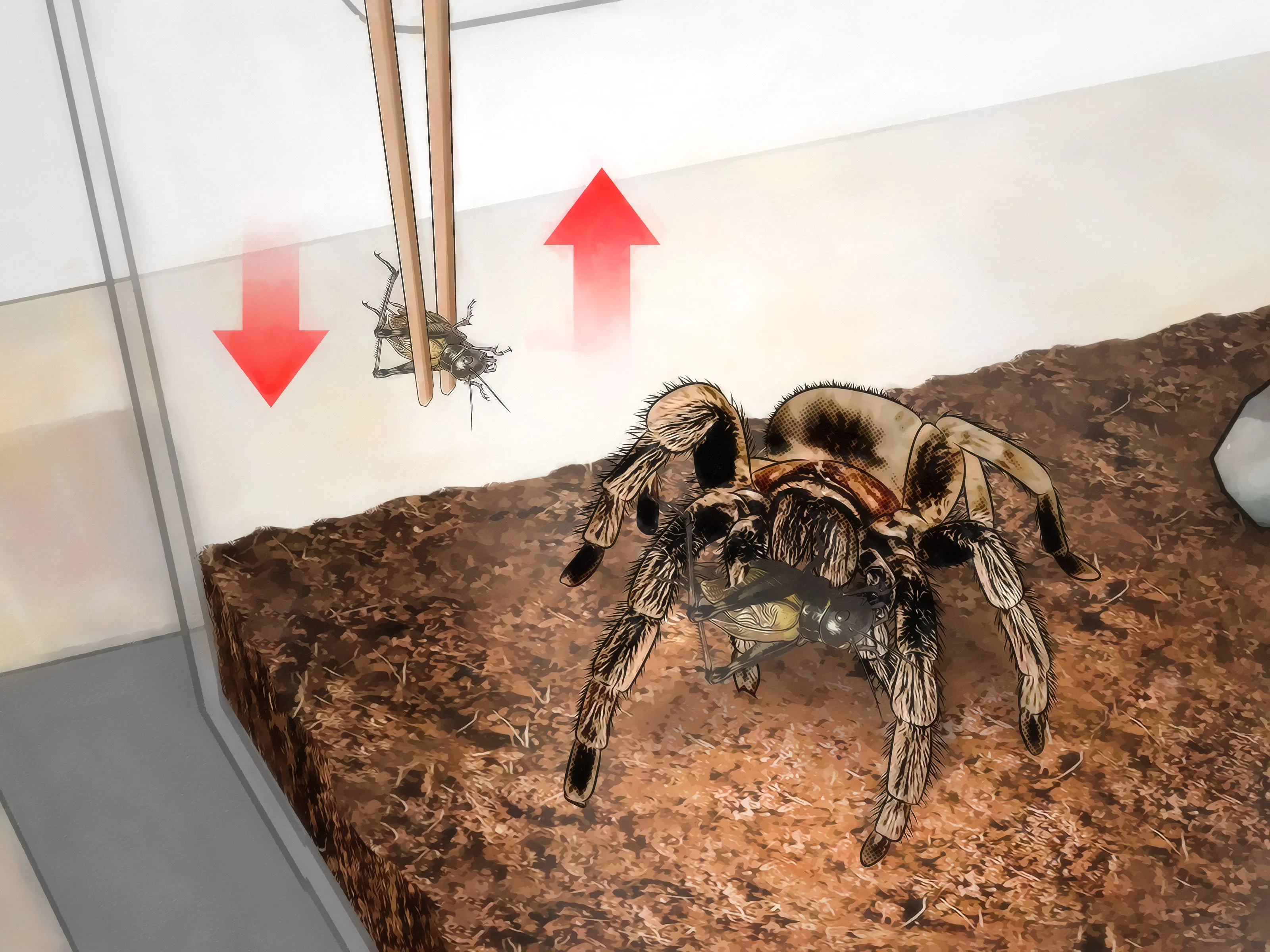Understanding Tarantula Feeding Needs
Feeding your tarantula is a critical aspect of its care, directly impacting its health, growth, and lifespan. Unlike many pets, tarantulas have unique dietary requirements and feeding schedules that vary based on several factors. Understanding these needs is the first step in ensuring your eight-legged friend thrives. This guide provides a comprehensive overview of tarantula feeding, covering everything from food choices to recognizing signs of overfeeding and underfeeding. Proper feeding not only keeps your tarantula healthy but also allows you to observe fascinating natural behaviors, such as hunting and molting. A well-fed tarantula is also a more robust and less stressed tarantula, contributing to a more rewarding pet ownership experience.
Factors Affecting Feeding Frequency
Several factors influence how often you should feed your tarantula. These factors help determine the optimal feeding schedule and prevent issues like obesity or malnutrition. Considering these elements ensures you provide the right amount of food at the right time.
Tarantula’s Age
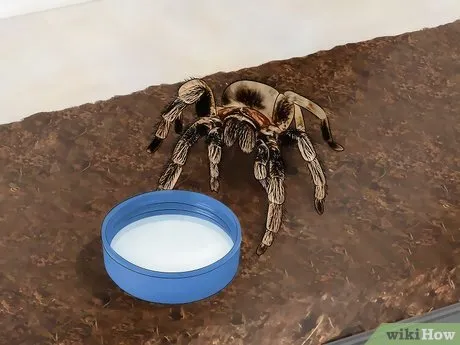
Spiderlings, or baby tarantulas, require more frequent feeding than adults because they are constantly growing. Their rapid growth necessitates a higher caloric intake. As they mature, their metabolism slows, and their feeding needs decrease. For spiderlings, you might feed them as often as every other day, while adult tarantulas may only need to be fed once or twice a week. This age-related variance is crucial for their development and well-being.
Tarantula’s Size
The size of your tarantula also impacts its feeding requirements. Larger tarantulas naturally need more food than smaller ones to maintain their body mass and energy levels. A larger tarantula will consume more substantial prey items. This also influences how frequently you should feed. It is important to adjust the portion size based on the tarantula’s size to prevent overfeeding and ensure it receives adequate nutrition.
Tarantula’s Species
Different tarantula species have varying metabolisms and growth rates. Some species, like the fast-growing Chilean Rose, might have slightly different needs compared to slow-growing species. Researching the specific dietary needs of your tarantula species is essential. Some species may prefer certain types of insects or have unique feeding habits. Understanding these species-specific requirements ensures you’re providing the best possible care.
Temperature and Humidity
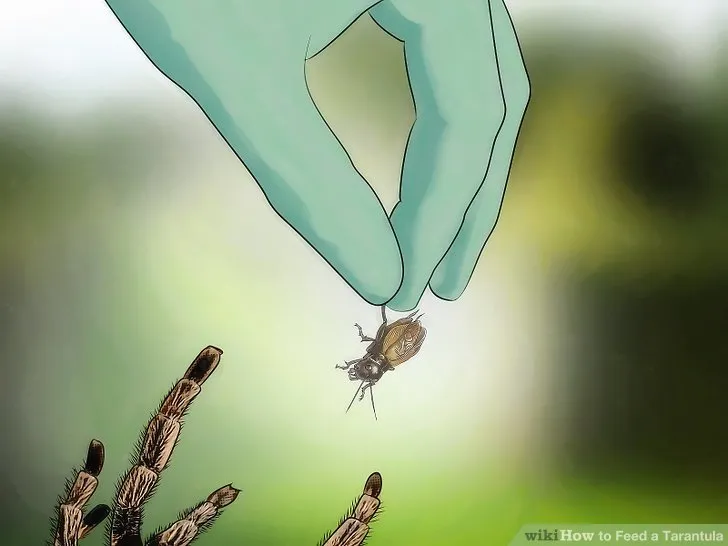
Temperature and humidity levels in your tarantula’s enclosure affect its metabolism and feeding habits. Higher temperatures generally increase metabolism, potentially increasing appetite. Similarly, appropriate humidity levels contribute to the tarantula’s overall health, which can influence feeding behavior. Monitoring and maintaining optimal environmental conditions are integral to a healthy feeding schedule and to provide a comfortable environment for your tarantula. Ensure the environment is appropriate to the species.
Appropriate Food Choices
Choosing the right food is paramount for your tarantula’s health. Tarantulas are primarily insectivores, meaning their diet consists of insects. While various options exist, some are more nutritious and easier to manage than others. Providing a varied diet is important for balanced nutrition. Here are some suitable food choices, with the important details for each. Always source your insects from a reputable dealer to minimize the risk of introducing parasites or pesticides into your tarantula’s enclosure.
Live Insects
Live insects are the primary food source for tarantulas, mimicking their natural diet in the wild. They provide the necessary nutrients and stimulate the tarantula’s hunting instincts. Common choices include mealworms, crickets, and roaches. Ensure the insects are properly gut-loaded with nutritious foods before feeding them to your tarantula, as this enhances the nutritional value of the meal. Gut-loading involves feeding the insects a diet rich in vitamins and minerals, which are then passed on to your tarantula. The goal is to provide a well-rounded and nutritious meal.
Mealworms
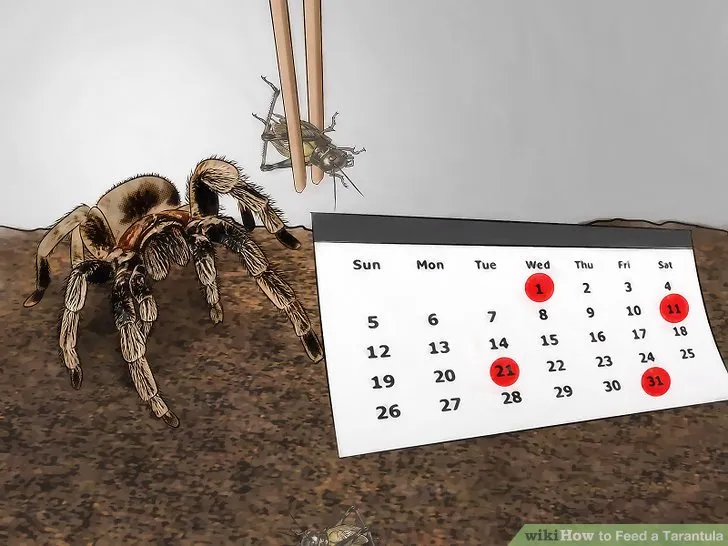
Mealworms are a popular choice for feeding tarantulas, especially spiderlings, due to their availability and ease of storage. They are relatively easy to manage and can be purchased in bulk. Mealworms offer a good source of protein, but they are somewhat low in calcium. You may need to supplement with other insects or calcium-rich foods. They can also be a bit challenging for smaller spiderlings to catch, so consider crushing the mealworm’s head to make them easier to eat. Make sure to remove any uneaten mealworms, as they can burrow and potentially harm your tarantula.
Crickets
Crickets are another excellent food option for tarantulas. They provide a good balance of nutrients and are readily accepted by most tarantulas. Crickets come in various sizes, making it easy to find appropriately sized prey for your tarantula. Before feeding crickets, dust them with a calcium and vitamin D3 supplement to enhance their nutritional value. Be cautious, as crickets can sometimes injure a tarantula during molting. It is also essential to remove any uneaten crickets from the enclosure to prevent them from harassing your tarantula.
Roaches
Roaches, such as Dubia roaches, are considered a highly nutritious food source for tarantulas. They have a higher protein content than crickets and mealworms. Roaches are also less likely to burrow or bite your tarantula, making them a safer option. They are slower moving, making them easier for tarantulas to hunt. Like crickets, they should be gut-loaded before feeding. Roaches provide an excellent balance of nutrients and are generally well-accepted by tarantulas. Roaches are also easier to keep alive for longer periods.
Pre-killed Insects
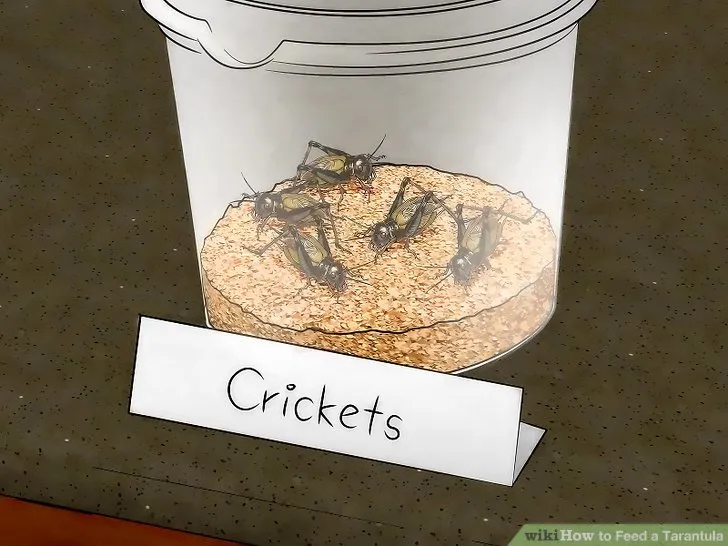
Pre-killed insects offer a convenient alternative, particularly for tarantula keepers who may be squeamish about live feeding or for very small spiderlings. Pre-killed insects eliminate the risk of injury from live prey. However, pre-killed insects must be fresh and properly stored to avoid any health risks. Ensure that the insects are freshly killed, and you should not leave them in the enclosure for prolonged periods. While convenient, pre-killed insects do not provide the same hunting stimulation as live prey. They should be part of a varied diet but not the only food source.
How Much to Feed Your Tarantula
Determining the appropriate amount of food is essential to your tarantula’s health. Overfeeding can lead to obesity, while underfeeding can stunt growth and cause nutritional deficiencies. Feeding frequency varies based on your tarantula’s life stage. Always observe your tarantula’s behavior and adjust the feeding schedule accordingly, making sure that uneaten food is removed within a reasonable time frame.
Feeding Schedule for Spiderlings
Spiderlings require more frequent feeding to support their rapid growth. You should typically feed spiderlings 2-3 times per week. Provide appropriately sized prey, such as small mealworms, pinhead crickets, or fruit flies. The prey should be no larger than the tarantula’s carapace (the top part of the body). Monitor the spiderling’s abdomen. A plump abdomen indicates a well-fed spiderling. Adjust the frequency based on its appetite and how quickly it consumes the food.
Feeding Schedule for Juvenile Tarantulas
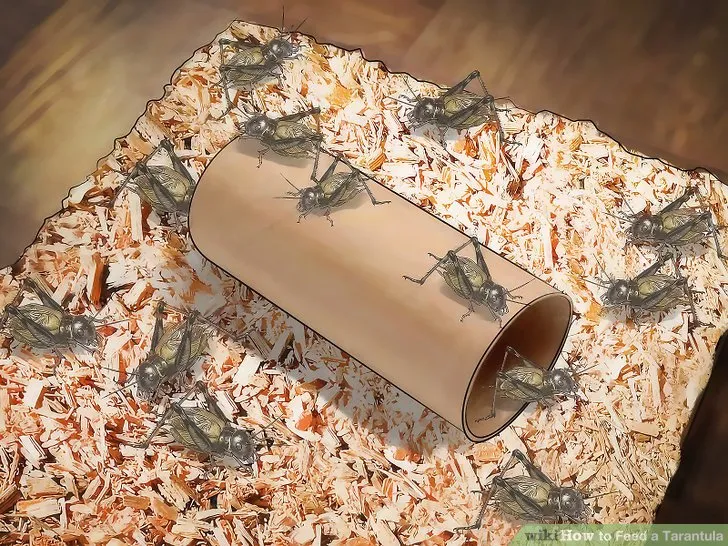
Juvenile tarantulas can be fed less frequently than spiderlings. Feed juveniles once or twice a week. The size of the prey can be increased as the tarantula grows. Appropriate prey for juveniles includes medium crickets and mealworms. The abdomen should be slightly plump, but not overly distended. A good rule of thumb is to feed the tarantula as much as it will eat in about 15-30 minutes. Remove any uneaten food after this period. Always adjust the feeding schedule based on the tarantula’s specific behavior and appetite.
Feeding Schedule for Adult Tarantulas
Adult tarantulas have slower metabolisms and require less frequent feeding. Feed adult tarantulas once every 1-2 weeks. Provide appropriately sized prey, such as large crickets or roaches. The prey should be about half the size of the tarantula’s body. It is not uncommon for adult tarantulas to refuse food, especially during molting or when they are close to molting. A slightly plump abdomen is a good indicator of a healthy adult tarantula. Monitor the tarantula’s weight and abdomen size to determine if you need to adjust the feeding schedule.
Signs of Overfeeding and Underfeeding
Recognizing the signs of overfeeding and underfeeding is essential for adjusting your tarantula’s diet. Both conditions can negatively impact their health. Regular observation and monitoring of your tarantula’s appearance and behavior will help you maintain optimal feeding habits. By understanding these signs, you can make necessary adjustments to keep your tarantula in top condition.
Recognizing Overfed Tarantulas
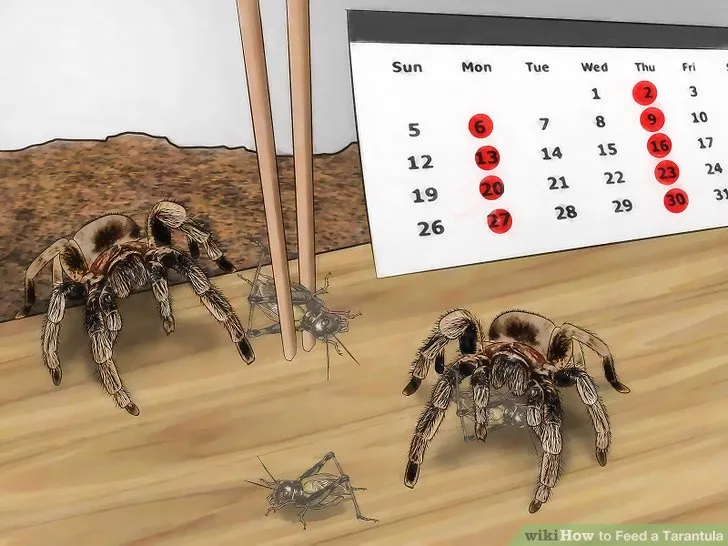
Overfeeding can lead to obesity and health problems. Look for these signs. An overly plump abdomen is a primary indicator of overfeeding. The abdomen should be rounded but not significantly distended. If the abdomen looks exceptionally large, the tarantula may be overfed. Loss of appetite can also be a sign. If your tarantula consistently refuses food, even when offered appropriate prey, it might be overfed. Reduced activity levels are another indication. Overfed tarantulas may become less active and spend more time in their hide. Monitor your tarantula’s molting cycle. Overfed tarantulas can sometimes experience difficulties during molting, as they may not be able to shed their exoskeleton correctly.
Recognizing Underfed Tarantulas
Underfeeding can lead to stunted growth and other health issues. Here are some signs to watch for. A thin abdomen is a primary sign. The abdomen should appear slightly plump. If it appears shrunken or wrinkly, your tarantula may not be getting enough food. Slow growth rates are another indicator. If your tarantula is not growing at a rate appropriate for its species and age, it may be underfed. Lethargy and inactivity are common. Underfed tarantulas may be less active and spend more time hiding. Observe their behavior closely. A tarantula that is constantly seeking food or showing signs of aggression towards prey may be hungry. Also, observe the molting cycle. If your tarantula has difficulty molting or molts infrequently, it could be a sign of underfeeding or other nutritional deficiencies. Consult a veterinarian if you have concerns.
Tips for Successful Tarantula Feeding
Successful tarantula feeding requires more than just providing the right food. Several practices can contribute to a healthy and happy tarantula. These tips will help you improve your tarantula-keeping skills and ensure your pet thrives. Following these guidelines creates the best possible environment for your tarantula.
Observe Your Tarantula’s Behavior
Regularly observe your tarantula’s behavior to understand its feeding habits and overall health. Note its activity levels, appetite, and any changes in behavior. Understanding your tarantula’s personality will help you identify potential issues early. Pay attention to when your tarantula is most active and its typical feeding response. This will give you a better understanding of its needs. Be observant of signs that might indicate stress, illness, or impending molt. This information is vital in tailoring your feeding schedule and providing the best care.
Remove Uneaten Food
Always remove uneaten food from the enclosure within 24 hours to prevent the growth of mold and bacteria. Leftover prey can stress the tarantula and also pose a threat during the molting process. Uneaten insects can bite or attack the tarantula, especially when it is vulnerable during molting. Removing uneaten food promotes a cleaner environment and minimizes the risk of health problems. Regularly check the enclosure after feeding and promptly remove any uneaten insects or insect parts. A clean enclosure benefits the tarantula’s overall health.
Provide Fresh Water
Ensure your tarantula always has access to fresh water. A shallow water dish is essential for hydration. Change the water frequently, at least once a week, to keep it clean and prevent the growth of bacteria. The water dish should be appropriately sized so the tarantula can easily access it without risk of drowning. Providing fresh water is essential for a healthy tarantula. This helps the tarantula stay hydrated, especially after eating or during molting. The water dish also helps maintain humidity levels in the enclosure, which is crucial for the tarantula’s overall health. Maintaining clean water ensures your tarantula stays healthy and hydrated.
Feeding your tarantula is a rewarding experience that contributes significantly to its health and well-being. By understanding their unique needs, choosing the right foods, and following a proper feeding schedule, you can ensure your tarantula lives a long, healthy, and fascinating life. Remember to be patient, observant, and always adapt your care to your tarantula’s individual needs. With proper care, you can enjoy the unique companionship that these amazing creatures offer. Enjoy the journey of learning and caring for your tarantula.
